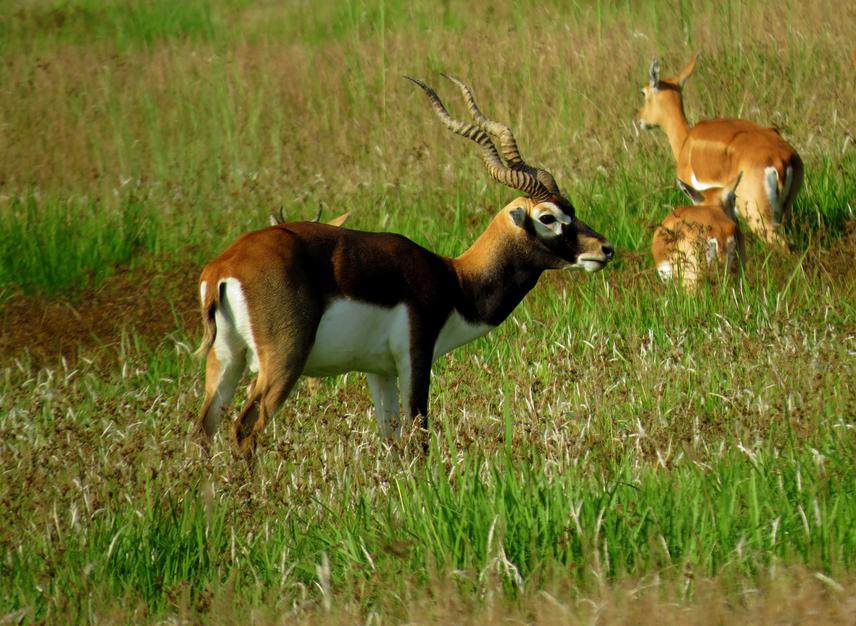Amar Kunwar
Other projects
28 Jul 2014
Habitat Assessment, Conflict Evaluation and Conservation Awareness of Blackbuck Antelope cervicapra cervicapra in Blackbuck Conservation Area, Bardia, Nepal
Acute anthropogenic pressures, continued resource extraction, increased conflicts and transmission of disease at the livestock-wildlife interface are some of the factors that increase risk of extinction for the inbred, immunologically compromised, nationally critically endangered, and genetically isolated population of Blackbuck in Nepal. This project aims to link population ecology research with conservation implications through community-based participatory management to counter the negative effects of anthropogenic activities, cease forest and grassland resource extractions in a sensitive ecosystem, mitigate road mortality and injury and infectious diseases, and alleviate conflict through appropriate livelihood alternatives, management guidelines and public participatory awareness and capacity building activities.

Male Blackbuck in Krishnasaar Conservation Area.
The Blackbuck (Antelope cervicapra) is one of the nationally critically endangered mammals of Nepal, found in the wild in Krishnasar Conservation Area in Bardia only. Their population is at great risk as their habitats have become fragmented and they are facing huge anthropogenic disturbances, forest and grassland resource extraction and human-blackbuck conflicts. They are forced to bind their activities to a core habitat of only 5.25 km2 where resources are limited. Livestock to blackbuck disease transmission is likely since livestock share the same pastureland with blackbuck. High volume of vehicles across the conservation area increases the risk of road accidents. Human activities in and around the CA may bring habitat alteration, loss of genetic diversity, displacement and ultimately species extirpation. So this project aims to assess cumulative effects of anthropogenic disturbances in blackbuck distribution and abundance and use those population parameters to inform management and mitigation in order to restore the blackbuck population to their original distribution throughout CA. We will use hierarchical models, including occupancy models and distance sampling, to determine habitat associations and anthropogenic covariate effects on the blackbuck population.
These models will allow us to compare multiple hypotheses to determine covariate effects on site use (occupancy), but also how covariates affect abundance (distance sampling). We will use AIC model selection to determine the most supported models and then estimate how these population parameters changes after applying management and mitigation in the subsequent seasons. Conservation Awareness programs to local people, school and college students and vehicle drivers and Monitoring techniques and capacity building Training to citizen scientists are targeted to switching those people inducing disturbances in the conservation area to involving them in conservation by providing detail information on Blackbuck ecology, major anthropogenic and natural pressures, their negative impacts, how this can drive this species to extinction and how local peoples’ active participation can aid in securing viable Blackbuck population in Nepal.